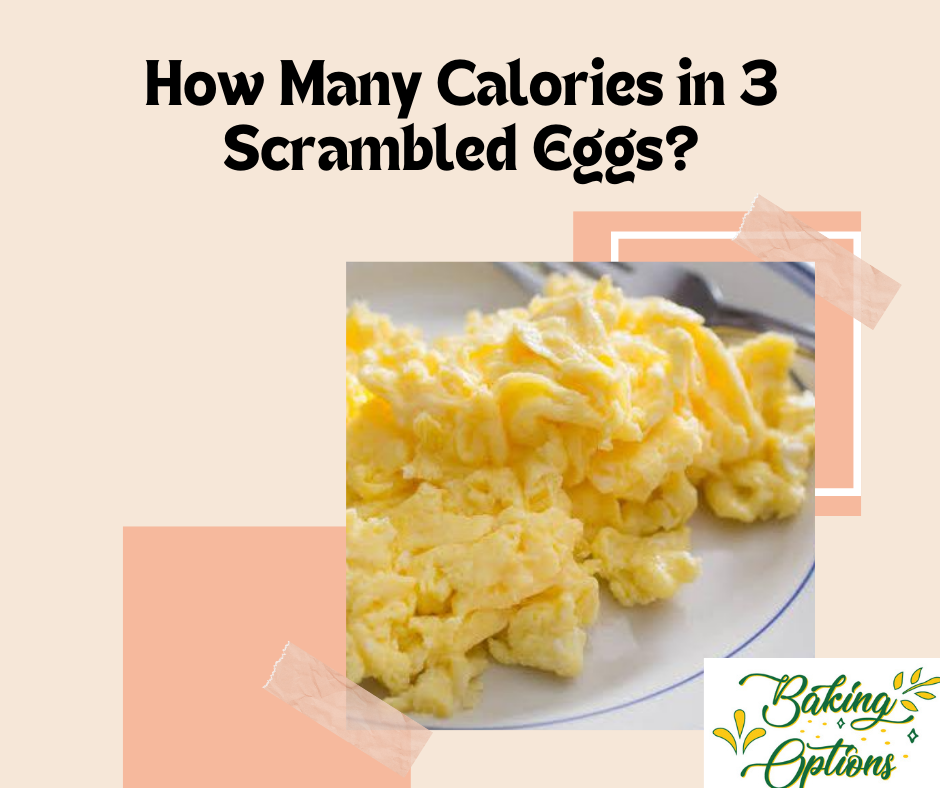If you are diet-conscious and want to figure out how many calories are in 3 scrambled eggs, generally, 3 scrambled eggs contain about 234 calories. However, this is not exact, as it depends on the size of the eggs and the ingredients you add.
For example, if you add cheese or butter, the calories increase. Regarding large eggs, the calorie count for 3 scrambled eggs is more than 300, around 304. Their calorie level is higher than that of boiled eggs and even fried eggs.
Contents
What Are Scrambled Eggs? Are They Healthy
Scrambled eggs are nutritious but can be high in cholesterol and fat, so it’s best to eat them in moderation unless advised otherwise by a doctor. Scrambling is also the most prevalent form of cooking eggs since 36% of eggs consumed in America are normally scrambled.
That all raises one question: Are scrambled eggs good for you?
7 Amazing Benefits Of Scrambled Eggs
- Nutritional Value
Cooked eggs are an excellent source of high-quality protein and are rich in vitamin B12, vitamin D, and selenium, among other nutrients. They contain approximately seventy to ninety calories per large egg if one adds ingredients or condiments.
- Heart Health
Eggs contain cholesterol, but current research shows that moderate use of eggs will not raise the risk of heart disease in this population. However, persons with particular health issues should seek professional medical advice.
- Versatility
To create meals, eggs can be scrambled with a variety of ingredients, such as cheese, herbs, or vegetables.
- Satiation
The protein content of scrambled eggs can help make the person feel full. Moderate eating will assist in weight loss when combined with other healthy foods.
- Cooking Methods
To prepare scrambled eggs effectively, it is best to use healthy fats, such as olive oil, or cook them using methods like steaming.
- Effective in Compartment-Specific Muscle Repair & Hypertrophy
Scrambled eggs are a good source of protein, particularly quality protein needed for muscle building after exercise. Protein, one of the major nutrients in the egg, is particularly essential for muscle tissue repair; hence, it should be of convenience, especially in a scrambled egg, to those involved in active exercises.
- Supports Healthy Vision
Lutein and zeaxanthin, two antioxidants, can be found in Scrambled eggs. These carotenoids shield the eyes from dangerous light. They can slow the advancement of age-related macular degeneration, enhancing long-term vision.
Milk in Scrambled Eggs: Creamy, Nutritious, and Delicious
Enhancing scrambled eggs with 2 tablespoons of milk is a simple way to elevate texture and taste. This small addition contributes just 10 calories, bringing your dish to 220 calories while creating irresistibly fluffy, light eggs that are a delight to eat.
But it’s not just about taste—milk also packs a nutritional punch! It’s a calcium, vitamin D, and protein source, vital for strong bones and overall health. For a lighter twist, choose low-fat or plant-based alternatives like almond or oat milk, which keep the calories in check without compromising the creamy consistency.
Remember, balance is everything. Whole milk improves your scrambled eggs. Pairing it with high-calorie extras like cheese or cream can quickly add up. Stick to moderation to enjoy a meal that’s both delicious and nutritious!
Do Scrambled Eggs Have Less Calories When Storing Them?
Our preparation method and choice of ingredients cause the caloric value to vary for scrambled eggs. If made with two large eggs, butter, and milk, a portion will cost you 200-245 calories. Although you refrigerate your scrambled eggs, you should know that the number of calories in your food will not change.
Storage Tips
To make your scrambled eggs last longer, put them in an airtight container before placing them in the refrigerator. Although the amount of calories in milk will not change depending on how long it is stored, it is best to use it within the next few days to enjoy its flavor and safety.
Important Takeaway
I think the preparation options choose the final number of calories in scrambled eggs, not the storage time. Storing properly just keeps them sound and safe to eat or use.
Comparing Eggs: Hard-Boiled vs. Scrambled
- Caloric Content
The sizeable hard-boiled egg contains 70-78 calories, so it wins in this category as the lighter one. Slightly neater eggs are marginally more expensive at 90-100 calories per egg due to additional cooking oils and accompaniments.
- Nutritional Profile
They contain roughly 6g of protein per egg, but perhaps a little more biologically available protein in hard-boiled eggs. Hard-boiled eggs also win regarding the nutrient retention of B vitamins and selenium. But preparing your scrambled eggs with vegetables and other healthy accompaniments can contain even more nutrients.
- Key Measurements
The cholesterol content stays relatively constant at about 186 mg per large egg. Scrambled eggs are typically higher in fat than fried eggs because of cooking oils or the addition of dairy products.
- Cooking Flexibility
Despite their nutritional value, hard-boiled eggs are inherent in scrambled eggs. Its preparation method also permits the inclusion of better nutrients such as vegetables, herbs, and lean sources of proteins, thus giving better food quality than their traditional counterparts.
- Practical Consideration
If you are particular about your calorie and fat consumption, hard-boiled eggs are the better option. Nevertheless, you are interested in a denser meal with various nutrients. In that case, scrambled eggs are ideal for a healthy meal base.
Can I use 3 scrambled eggs for weight loss?
Three scrambled eggs provide:
- Approximately 60 g of calories (depending on the method of its preparation).
- 60 grams of high-quality protein
- Vitamin A, D, B12, selenium, as well as fats
For weight loss success with scrambled eggs
- Mind Your Preparation
Do not over-fry your eggs or add a lot of oil or butter while preparing your foods. These foods can be prepared using a nonstick pan to eliminate the need for extra fats. If adding milk, a small splash of low-fat milk
- Timing Matters
While cooking eggs, avoid using too much oil or butter or frying them for too long. You can make these foods in a nonstick pan, which helps you use less fat. If you want to add milk, just a tiny splash of low-fat milk will do!
- Smart Pairings
Vegetables like spinach, tomatoes, or peppers can be added to increase portion size without adding many calories. A wholesome meal can be even better with fruit or whole-grain toast on the side to make it more filling.
Calories Of Scramble Eggs When Consume With Olive Oil
The number of calories in scrambled eggs will depend on the eggs used and the amount of olive oil added.
For example, two large scrambled eggs contain approximately 140-156 calories, depending on their size and cooking method. If you add one tablespoon of olive oil, which includes about 120 calories, then the total calorie count for this meal would be around 260-276 calories.
A single large scrambled egg will have roughly 91 calories, plus the calories from cooking in olive oil. Because of this, the number of eggs and olive oil used in the meal preparation process can affect how many calories are included in scrambled eggs with olive oil. I hope it’s clear to you now.
Final Words
Most often, scrambled eggs are considered beneficial to our health. In fact, eggs, from fried to scrambled to boiled, are among the most nutritious foods one can ever devour on Earth.
For years, people were told that eggs could lead to high cholesterol and lousy heart health for consumers. However, new research shows that eating eggs raises cholesterol levels in a healthy, normal person.
However, ensure that you fry your eggs for the shortest time possible and on low heat, which will provide maximum nutrients preserved and minimal cholesterol oxidation. Select pasture-raised eggs if possible, and only use heat-stable cooking oil like tallow, ghee, and other healthy saturated fats.

